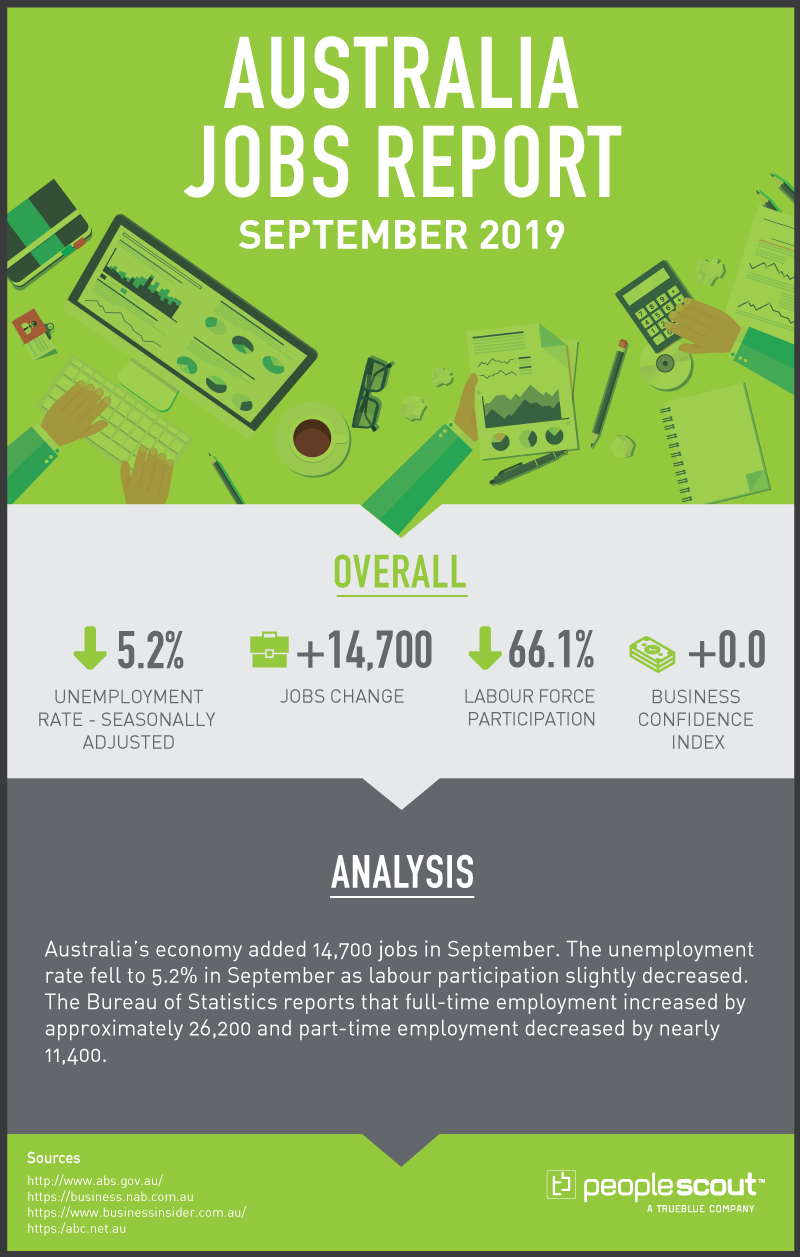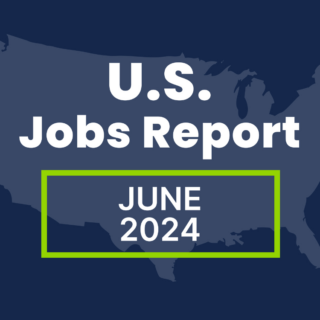Australia’s economy added 14,700 jobs in September. The unemployment rate fell to 5.2% in September as labour participation slightly decreased. The Bureau of Statistics reports that full-time employment increased by approximately 26,200 and part-time employment decreased by nearly 11,400.

Numbers
14,700: The Australian economy added 14,700 jobs in September.
5.2%: The Australian unemployment rate fell to 5.2%.
66.1%: Labour force participation fell to 66.1%.
0: The Business Confidence Index fell to 0 in the latest NAB release.
Upside
The Australian economy added 14,700 jobs in September. Full-time employment increased by approximately 26,200 while part-time employment decreased by nearly 11,400. This is a positive sign because full-time work adds more wealth to the economy than part-time employment. The unemployment rate fell to 5.2%, the first decrease in seven months.
In seasonally adjusted terms, the largest increases in employment were recorded in Queensland which was up 25,300 and Victoria which increased by 8,600. Since September 2018, full-time employment increased by 191,700, while part-time employment increased by 119,900.
Downside
While the report was generally viewed as positive, the labour market in September was far from ideal. The unemployment rate is much higher than the Reserve Bank of Australia’s (RBA) aspirational goal of 4.5%.
Reuters reported that RBA Deputy Governor Guy Debelle cautioned that a downturn in home building had been a “larger drag on the economy and jobs than first expected and was set to get worse before it got better.”
Additional caution was expressed by Marcel Thieliant, an economist at Capital Economics, who said, “The RBA will breathe a sigh of relief after the unemployment rate dipped…But employment surveys point to jobs growth slowing and we expect unemployment to reach 5.5% by early next year.”
The largest job loss was in New South Wales which lost 23,000 positions pushing the unemployment rate up 0.2 percentage points up to 4.5%. And while the unemployment rate fell for the nation as a whole, the jobless rate remains stubbornly high in a number of states: In September the unemployment rate in Western Australia was 5.7%; in Tasmania it was 6.2%; in South Australia it was 6.3%. West Australia had the highest jobless rate with 6.5%, a full 1.3 percentage points higher than the nation as a whole.
Negative Forecasts – How Should Employers React?
The International Monetary Fund’s World Economic Outlook predicts slowing growth in Australia.
In the latest release, the IMF predicts just 1.7% growth in 2019, which is a full percentage point lower than 2018.
At the same time, the National Australia Bank reports that anxiety around the cost of living is increasing for Australians. In September’s Consumer Anxiety Survey, anxiety rose 2.3 points to 64.7.
An article in The Guardian entitled “Did you enjoy the good times? Because the economic outlook for Australia has tanked” paints a bleak picture of the future of the nation’s economy. It points out that in the 12 months leading up to June 2019, Australia’s GDP grew at its slowest rate since 2001.
However, businesses should not overact to the spate of negative economic forecasts. Australian employers that have the experience and expertise to effectively engage and retain their current workforce will have the competitive advantage in an uncertain talent market in which workers may leave to pursue higher wages. Organizations that have the best tools for workforce planning and recruitment which support sustainable growth can succeed regardless of the strength of the future economic environment.



